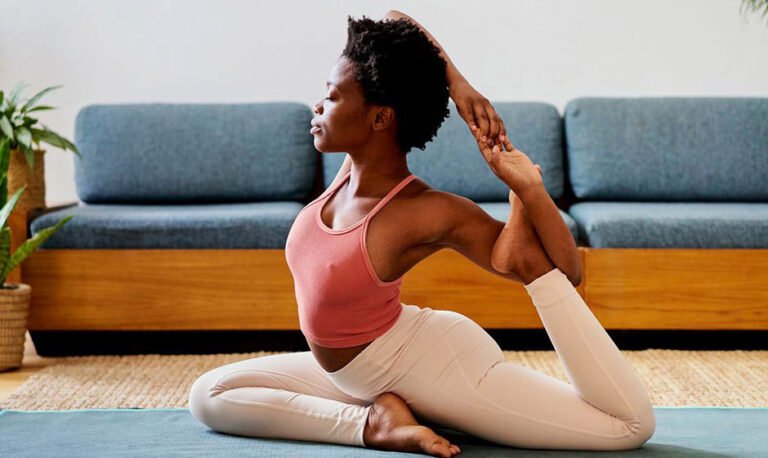Physical therapy can help you regain strength, mobility, and function. Yoga and functional movements involve physical postures, breathing techniques, targeted movements, and meditation. Combining yoga and physical therapy can contribute to improved progress and overall well-being. From increasing flexibility and balance to relieving stress and anxiety, here are several benefits of physical therapy yoga:
Improved Flexibility
Physical therapy yoga can enhance mobility by improving flexibility. Yoga poses such as the Downward Dog and Cobra can help target tight muscles and relieve tension through intentional stretching. With improved flexibility, you may have an easier time moving your body and completing other physical therapy exercises.
Improved Balance
A good sense of balance helps in daily activities and exercise sessions. Combining yoga and physical therapy can improve balance by targeting postures that involve balancing on one leg, like the Tree Pose, or standing on unstable surfaces. Targeted functional movement can help you achieve greater stability and balance.
Reduced Pain and Inflammation
Gentle, slow-paced yoga poses and stretches may help relieve pain associated with injuries and mobility issues. It may also improve posture and alignment, reducing pressure on the joints. This can contribute to a more comfortable physical therapy experience. These poses are typically held for several minutes to help release tension, potentially reducing pain and improving overall well-being.
Increased Strength and Muscle Tone
Yoga focuses on bodyweight exercises that target specific muscle groups, including arms, back, and legs. Incorporating yoga into your physical therapy sessions allows you to build strength. It can also improve muscle tone and help you regain a healthy posture. Stronger muscles can support joints better, which in turn may help reduce pain and inflammation. Improved strength may help you complete physical therapy exercises more efficiently and safely.
Core Strengthening
The core muscles stabilize the torso and provide power to your body. Yoga poses such as Boat Pose, Plank, and Bridge target the core muscles. Incorporating yoga into your physical therapy sessions can help you build a strong foundation of support for better balance and stability during movement.
Better Coordination
Engaging in different yoga poses and stretches can help you develop better body awareness and coordination. By focusing on increasing the body’s mobility and flexibility, yoga can contribute to improved body alignment, which may help increase the effectiveness of physical therapy exercises. Functional movements can help you release tension in frequently tight muscles, such as the hamstrings and back muscles.
Increased Mindfulness
Yoga also helps in enhancing mindfulness, which may help improve an individual’s view of physical therapy. Mindfulness is about being present and living in the moment. It creates awareness of your physical, emotional, and mental experiences. Focusing on your breathing and aligning it with your movements can create a calming effect. When you are calm, your body, brain, and nervous system can relax and potentially be more responsive to physical therapy exercises.
Reduced Stress
Yoga is known for its calming effects on the mind, body, and spirit. Practicing yoga can help lessen feelings of chronic stress. It can also help with relaxation, leading to better sleep quality and a healthier mindset. When the body is relaxed, it may move more easily, allowing you to be intentional with your body movements as you flow through physical therapy exercises. This may help you reduce the risk of further injury and maximize the benefits of your physical therapy.
Start Physical Therapy Yoga Today
Yoga can be a great addition to your physical therapy sessions. It can help improve flexibility and balance, increase strength and mobility, and reduce stress and anxiety. Regular practice may also improve your range of motion and increase mindfulness. Contact a functional movement expert to learn more about the benefits of physical therapy yoga.


